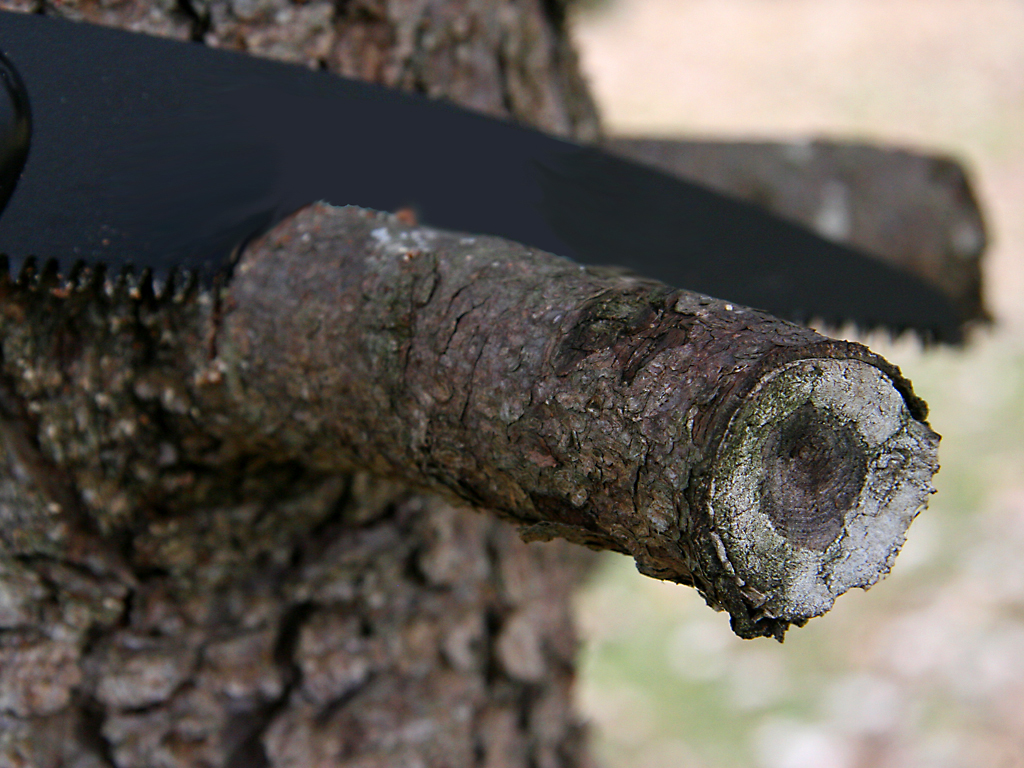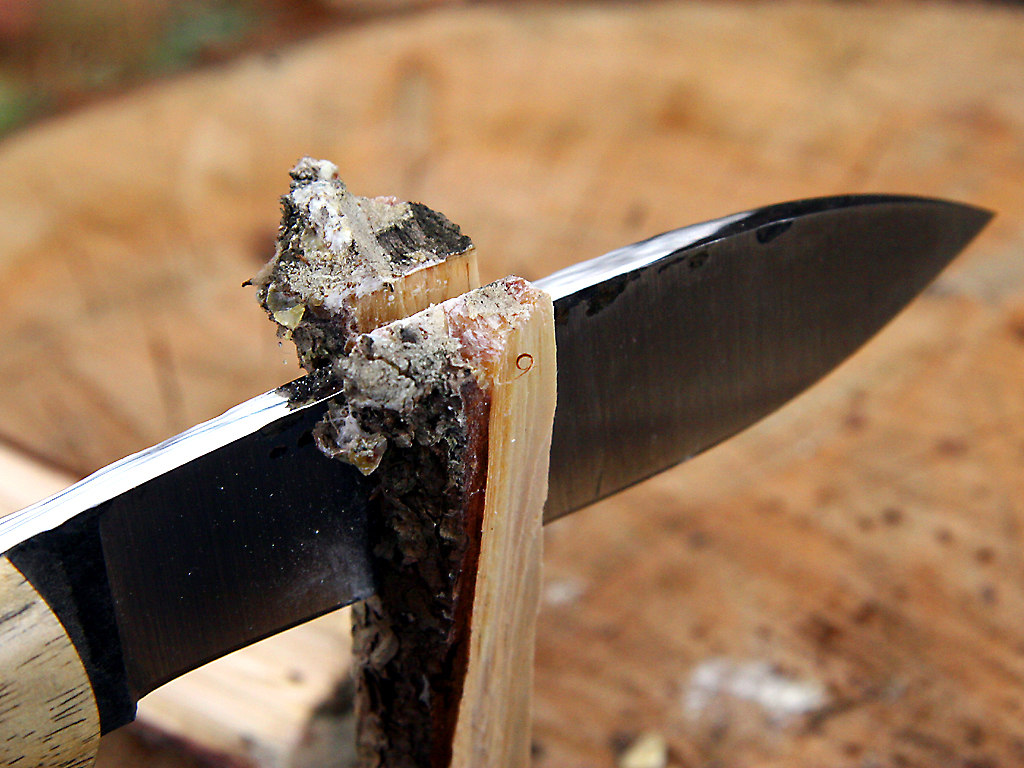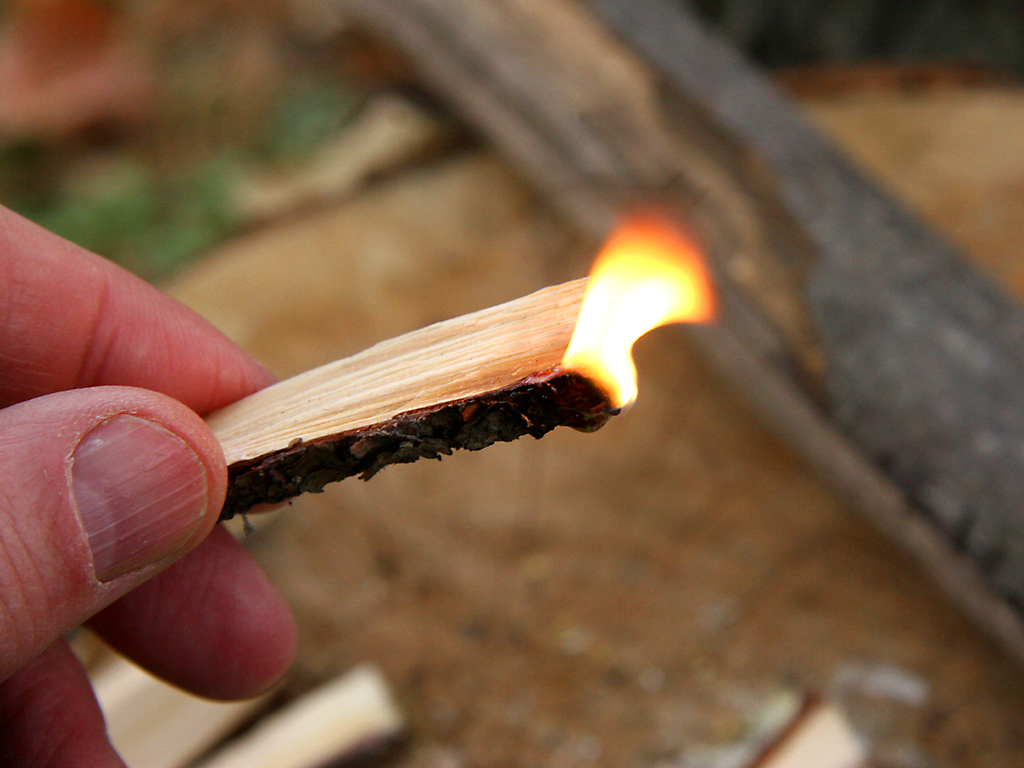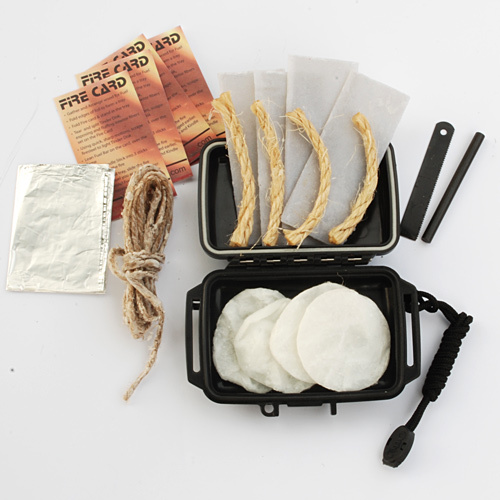Essential skills: "Poor Man's Fatwood"
21st Nov 2014
Essential skills: "Poor Man's Fatwood"
On KnivesShipFree.com we've devoted an entire section to "fire making," and for good reason -- it's one of those skills that everyone should learn and practice. To help you make that happen, we offer a whole range of firemaking supplies, from firesteels to complete fire kits.
But even if you never venture into the woods without a KSF Deluxe Fire Kit, you should still know how to forage for what you need to get a fire going. One of the woods-walker's favorite materials is something called "fatwood."
Fatwood, the resin-rich heartwood of pines, is the ultimate natural firestarter. Until you've watched it burn -- whether you've harvested it laboriously from a lightning-struck tree or bought a bundle from Firebugs'R'Us -- you don't know what you're missing. We even carry it in our personal KSF Fire Kit (there's plenty of room to add a stick or two).

There's no question that old pine stumps produce the best fatwood, but even a living tree will push resinous sap toward any injury. When a branch breaks off or is cut, resin will fill (and eventually ooze out of) the wound.
Quite frankly, liberating fatwood from a stump or unearthing (and processing) a rock-hard taproot can be more trouble than it's worth. If you simply want a cook fire, it's inconvenient; if you need a survival fire in the dead of winter, you may not have time to harvest ideal fatwood. Fortunately, there's an easier way to get the job done.
In our experience, the handiest source of utility-grade fatwood is the stubs of lower pine branches. You'll find these stubs anywhere someone's maintained a hiking trail or cleared a shooting lane. And they're all over the place in suburban settings, of course, thanks to tidy homeowners.
We call it "poor man's fatwood."
On a recent walk in the nearby woods we found a suitably pruned pine tree. Using a pocket saw, we lopped off several thumb-sized stubs, carefully choosing ones with a chalky buildup of resin at the cut ends.
The wood was relatively hard and it didn't yield easily to the saw, which is always a promising sign. We also gave the freshly cut pieces the good old "smell test" -- a strong whiff of turpentine confirmed the presence of turpene, the volatile compound that makes fatwood burn so well.

Next, we deployed our fixed-blade knife -- on this day it was Lon Humphrey's wonderful hand-forged Kephart -- for some light-duty batoning. (Seriously, boys and girls, this is the easiest batoning you'll ever do.) Using the knife blade as a wedge and a hardwood stick as a baton, it was a simple matter of splitting the stub a couple of times to expose "the good stuff."
 To spot the best-burning "poor man's fatwood" in these stubs, we always look for sticky, dark-orange veins of concentrated resin. We found some excellent candidates in this batch, verifying our suspicion by touching a lit match to one of them -- it took flame immediately and burned strong for about five minutes. We pocketed the remaining stubs, saving them for another fire, another day.
To spot the best-burning "poor man's fatwood" in these stubs, we always look for sticky, dark-orange veins of concentrated resin. We found some excellent candidates in this batch, verifying our suspicion by touching a lit match to one of them -- it took flame immediately and burned strong for about five minutes. We pocketed the remaining stubs, saving them for another fire, another day.
Pro tip: For best results, especially when using a firesteel, shave fatwood into thin curls or (using your firesteel striker or the spine of your knife) scrape it into powder. Oh, and did we mention that fatwood will burn even when it's wet?
Remember: skills matter. As much as we love knives -- and we know that you share our passion -- they're only tools. It's what we do with our knives that brings us real enjoyment.



